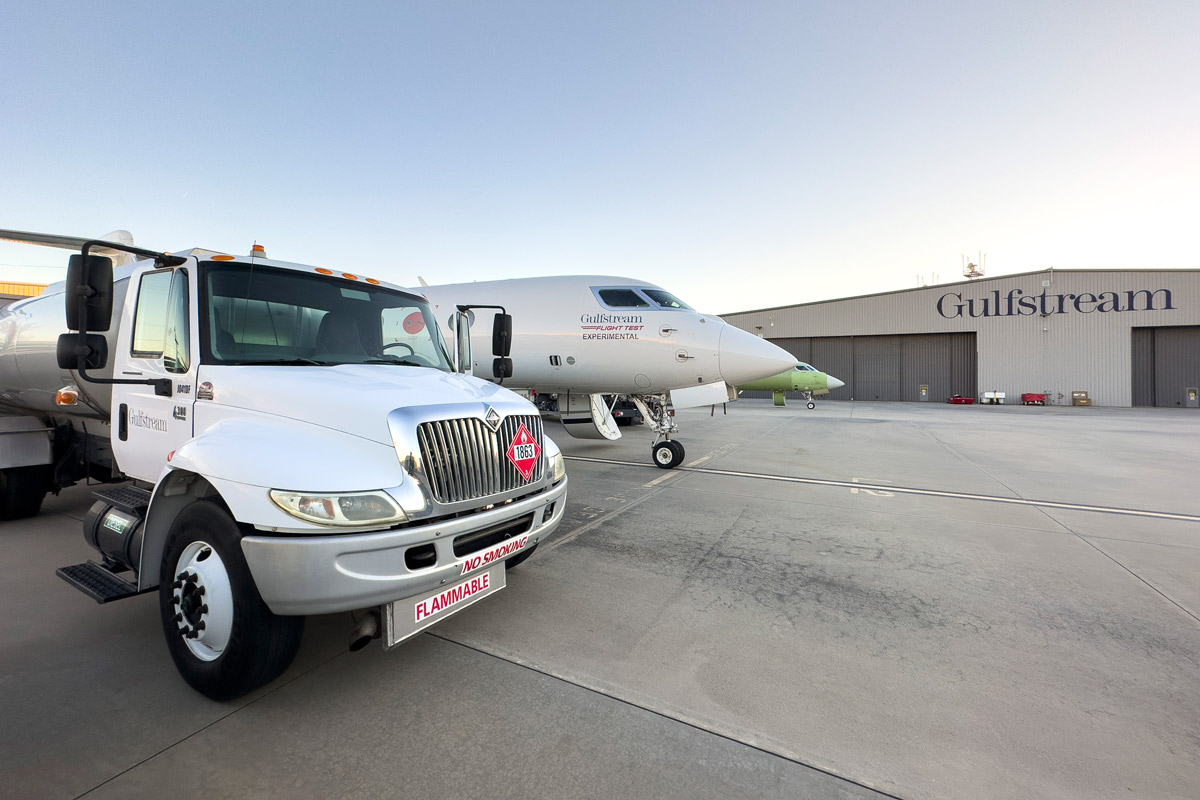Gulfstream Aerospace Corp. announced it is the business-jet industry’s first original equipment manufacturer (OEM) to fly on 100% sustainable aviation fuel (SAF). The flight took place on a Gulfstream G650 from Gulfstream’s worldwide headquarters in Savannah and was flown in partnership with engine supplier Rolls-Royce on the G650 BR725 engine.

“At Gulfstream, leading our industry closer to decarbonization is a long-standing priority, and testing, evaluating and promoting new developments in SAF takes us another step closer to that goal,” said Mark Burns, president, Gulfstream. “We are grateful for our partnership with Rolls-Royce to be able to demonstrate yet another milestone in these efforts.”
Gulfstream’s sustainability strategy encompasses three pillars — energy and emissions; operations; and culture and learning — and supports industry goals established by the National Business Aviation Association, the General Aviation Manufacturers Association and the International Business Aviation Council. The goals are a 2% improvement in fuel-efficiency per year from 2010 to 2020; carbon-neutral growth from 2020 onward; and net-zero carbon dioxide emissions by 2050.
“Gulfstream has long prioritized sustainable products and practices through innovations in aerodynamics, aircraft technologies, engineering, manufacturing and infrastructure, as well as in facilities operations and our investments in SAF research and development,” said Burns.
The SAF that was used in the test consists of two components: HEFA (Hydroprocessed Esters and Fatty Acids), produced from waste fat and plant oils by low-carbon fuel specialist World Energy in Paramount, California, and SAK (Synthesized Aromatic Kerosene) made from plant-based sugars by Wisconsin-based Virent Inc.
This in-development and fully sustainable fuel eliminates the need for the addition of further petroleum-based components and enables a 100% drop-in SAF that can be used in existing jet engines and infrastructure without any modifications. This sustainable fuel has the potential to reduce net CO2 life cycle emissions by nearly 80% compared with conventional jet fuel, with the possibility of further reductions.

